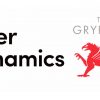Do you need to spend over $1,000 for a great sounding phono cartridge?
Whilst they are certainly some great options from Grado Labs, Ortofon, Hana, Dynavector, and others — we think your money is better spent on cartridges like the Sumiko Wellfleet ($449) and Amethyst ($599) if you are unsure where to maximize your hard earned shekels.
Spend less on the cart and more on the music. It’s a much better long-term investment.
Physical media is showing signs of life again in a digital streaming world and the resurgence of vinyl has been the driving force behind that shift.
Putting aside the recent controversy in regard to vinyl sales data reporting, there is no question that interest in vinyl remains strong at the end of 2024 — almost 18 years into the revolution.
Record Store Day has become so popular that it requires a second event on Black Friday; you can read about some of the new titles here.
New CD sales are not strong but the used CD market is absolutely booming.

The pandemic forced cities to ban live music events and that proved to be a catalyst for audio cassette sales; independent artists had to make a living and most of that came from the sale of their music on physical formats.
Are we moving to an environment where physical media accounts for almost 15% of music revenue for artists and the labels? Nobody is turning away money when streaming earns so little for most artists.
Circling back to my original question — no, you don’t have to spend over $1,000 for a great phono cartridge and we discovered over the past 12 months that Sumiko has a growing and impressive lineup of MM and MC cartridges including the Blue Point No. 3 ($500 USD) that will over deliver at their respective price points.
Sumiko Wellfleet

The $449 Sumiko Wellfleet MM Cartridge pushes that price ceiling higher but the early word is that the new nude 0.3 x 0.7mil elliptical stylus MM cartridge is quite the overachiever below $500 — which puts it in direct competition with the Ortofon 2M Bronze, Nagaoka MP-200, and Grado Labs Timbre Series Platinum3 cartridges.
Sumiko has applied and upgraded its award-winning design of the Moonstone
cartridge, retuning the suspension for optimal performance of a nude elliptical diamond with the existing generator and resonance-optimized housing found in the rest of the Rainier series.
The Sumiko Wellfleet utilizes a highly polished nude elliptical stylus, eliminating the bonding between the stylus tip and shank. With the new assembly, excessive mass in the shank is cut away to further reduce tip mass, resulting in a faster,
more direct, and more accurate response of the stylus’ movement by the cantilever and magnet.
This series of MM carts offer between 2.5 mV and 5 mV of output. The Moonstone is around 2.5 mV while the Rainier is almost 5 mV.
The Wellfleet is crafted by hand in Yokohama, Japan (and that applies to every cartridge in the Oyster and Reference ranges), and offers 3 mV of output — which is on the lower end of the range for a MM cartridge. The 6.5 gram cartridge has a recommended tracking force range of 1.8g – 2.2g — 2 grams proved to be ideal with almost every arm.
Sumiko Amethyst

The flagship $599 Amethyst MM features physically interchangeable styli (which applies to the Wellfleet as well), but the cartridge body is not identical to the rest in the range, and uses an improved anatomy to bolster the performance of the line-contact diamond.
Amethyst features a 0.2 x 0.8mil Nude Line-Contact stylus and also weighs 6.5 grams.
The output drops ever further down to 2.5 mV which makes it a direct competitor to the Dynavector 10×5 (which is now available in MKII iteration).
It’s almost a high output MC at this point.
The tracking force range is the same and you’re likely to find success using 2 grams of force.
The Amethyst does claim greater extension in the top range on paper; 35kHz compared to 33kHz — and I was rather surprised to discover that it does offer greater top end detail and clarity.

Comparison
| Amethyst | Wellfleet | |
| MSRP | $599 | $449 |
| Type | moving magnet design | moving magnet design |
| Stylus | 0.2 x 0.8mil Nude Line-Contact | 0.3 x 0.7mil Nude Elliptical |
| Frequency response | 12-35,000 Hz | 12-33,000 Hz |
| Output voltage | 2.5 mV | 3 mV |
| Stereo separation | 30 dB | 30 dB |
| Channel balance | 0.5 dB | 0.5 dB |
| Tracking force range | 1.8-2.2 g | 1.8-2.2 g |
| Recommended tracking force | 2 g | 2 g |
| Load impedance | 47k ohms | 47k ohms |
| Load capacitance | 100-200 pF | 100-200 pF |
| Cartridge weight | 6.5 g | 6.5 g |
| Warranty | 1 year | 1 year |
Tip: Both models include a plastic stylus guard, case, 2 mounting screws, 2 plastic washers, allen-key and brush.
How Did We Test Them?
The Cambridge Audio Evo 150 Network Amplifier does include a rather workable MM phono section, but for the purposes of the showdown, we decided to inject the Pro-Ject Tube Box DS2 and Moon by SimAudio LP110 V2 into the mix to extract the best possible performance from the two cartridges.
Turntables included the NAD C 588, Pro-Ject X2 B, Pro-Ject Debut Pro, and Yamaha YP-701.

The Dynavector 10×5 on my Thorens TD-145 from Vinyl Nirvana is a royal PITA to remove so we decided to leave that alone; my hands have started shaking again from a new bipolar medication and one knows how that is going to end up. And I would deserve it.
We reviewed the Debut PRO and found it to be a surprisingly strong performer below $1,100 — it might be as good as my fully tricked out Thorens TD-145 running the aforementioned Dynavector 10×5 low output moving coil cartridge. I liked the supplied Sumiko cartridge but it was always my gut feeling that a better cartridge could take this table to another level.

The Japanese cartridge manufacturer sells a lot more of its Rainier MM carts than its expensive MC offerings for the simple reason that most consumers getting into vinyl for the first time are buying integrated amplifiers with a MM phono stage and consider $350 to be their maximum ceiling for a phono cartridge.
Listening
The Yamaha YP-701 comes with a detachable headshell which facilitates cartridge swaps more easily and it became my primary deck — although the Pro-Ject Debut Pro equated itself well with both and is the more likely final destination for either.
I would also caution those who look specifically at the specifications and think they must sound rather similar.
There is a “house” sound but the additional $100 does result in some differences that will be highlighted by a more resolving turntable and phono pre-amplifier.
So what is the same?
Both are extremely transparent sounding, punchy, solid trackers on dirty records, and add a layer of warmth without becoming guilty of excessive coloration in the mid bass and midrange.
The Wellfleet offers slightly less resolution but I love its pacing and snap with jazz and rock recordings.
John Prine’s In Spite of Ourselves (Oh Boy Records, OBR-019-LP) hits slightly harder now that the acclaimed songwriter and guitarist is gone and the title track recorded with Iris DeMent certainly resonates with those of us who have been around the block more than once.
Prine’s vocals are delivered with a nice edge through both cartridges, but the Amethyst imparts more color into his voice and that trademark grit does not get buried behind the instrumentation.
DeMent’s accompanying vocals feel slightly recessed in the soundstage through the Wellfleet but that’s more of a depth issue than some loss of body and detail.
The pacing through both feels exactly right.
Some of my recent Blue Note releases from Lee Morgan, McCoy Tyner, and Wayne Shorter were a good way to break down the performance of each cartridge and whilst both were exceptionally good with jazz recordings — there were some rather clear differences.
The Amethyst certainly delivers a firmer foundation with greater impact in the bass range; the Wellfleet might be slightly quicker sounding and tighter in the same range but it doesn’t quite deliver the same degree of force.
The upper bass and lower midrange of the Amethyst certainly add more weight to both instruments and vocals, without sacrificing that much clarity or detail.
The Wellfleet delivers a very similar performance but without all of the additional body and texture.
In darker sounding systems, the less expensive Wellfleet might be the better option if you are using a thicker sounding amplifier and loudspeakers that could benefit from some additional clarity and top end detail.
Pacing is a strength of both and they barely flinched listening to Metallica, the Cure, Depeche Mode, U2 and Smashing Pumpkins.
The Competition
My Ortofon 2M Black and Dynavector 10×5 are significantly more expensive than either Sumiko cartridge and it was clear that both offer greater resolution and impact overall. The 2M Black just sounds bolder and more resolute throughout. The 10×5 is good (but not great) at everything, but I would say that there isn’t a huge difference with the Amethyst when it comes to top end detail.
The Dynavector has greater impact than the Wellfleet in the bass range and is smoother overall.

My Grado Timbre Opus3 is one of the more neutral sounding (for a Grado) cartridges from the Brooklyn manufacturer and less expensive by almost $200; the construction quality of both Sumiko cartridges is superior and they are easier to install.
However, the Opus3 does such a credible job with both male and female vocals that I almost have to insist that you audition one as well if you can. Grado cartridges generally have a rather warm tonal balance which can often obscure midrange and top end detail.
That is not the case with the Opus3 — another reason why it is such a great value for the money.
The Amethyst does offer greater resolution and I might even give it a slight edge in the speed department; electronic music and 1980s new wave benefits from its slightly forgiving nature and strong pacing. Bad recordings do not become audiophile pressings but they are definitely more listenable.
Pros:
- Both cartridges offer excellent build quality
- Very good trackers
- Punchy and dynamic presentation
- Amethyst offers greater resolution
- Wellfleet is excellent with jazz, rock, and electronic music
- Excellent value for the money
Cons:
- The Wellfleet is better suited for darker sounding systems
- Soundstage could be wider
- Not as transparent as the Ortofon 2M Bronze or Goldring E4

The Bottom Line
For those looking to upgrade their phono cartridge, there are a wide range of great options from from Sumiko, Grado Labs, Hana, Nagaoka, Goldring, and Ortofon. Is there a lot of daylight between all of the contenders that dominate the price category? We really don’t believe that to be the case.
What makes the Sumiko Wellfleet and Amethyst so intriguing is that they are easy to install, consistently well performing with a wide range of equipment and turntables, and solid values for the money.
The Amethyst is almost priced too low considering what it is capable of on a really good table with a high performance phono pre-amplifier.
So which one should you buy?
The Amethyst is the superior all-around cartridge of the two, but the Wellfleet is a surprising upgrade over the Sumiko Rainier that comes pre-installed on a growing number of entry-level turntables. Faster, better at detail retrieval, and a superior level of resolution. It is not as warm sounding, but those paying a little extra want greater stereo separation, enhanced inner detail, and more snap on top.
Which one would I buy?

The Sumiko Blue Point No. 3 ($500 USD) would be my preference on the Yamaha or Debut Pro — but I will concede that the Amethyst bests its performance in the bass range with greater weight and overall impact. The Blue Point No.3 is definitely a better option for acoustic music if that is your musical slant.
Where to buy:
- Sumiko Wellfleet – $449 at Amazon | Crutchfield
- Sumiko Amethyst – $599 at Amazon | Crutchfield
Related Reading:


































Thomas
April 12, 2025 at 3:28 pm
The comparison chart is not accurate. The names and prices only need to be swapped. The specs for the Wellfleet are actually the Amethyst specs and vice-versa.
Ian White
April 12, 2025 at 3:58 pm
Thomas,
Good catch. TY for pointing that out.
Fixed.
IW